A natural approach to river restoration on the Lyvennet
End of a two-year project to improve flood resilience and wildlife habitat by restoring natural river processes and reconnecting the river with its floodplain
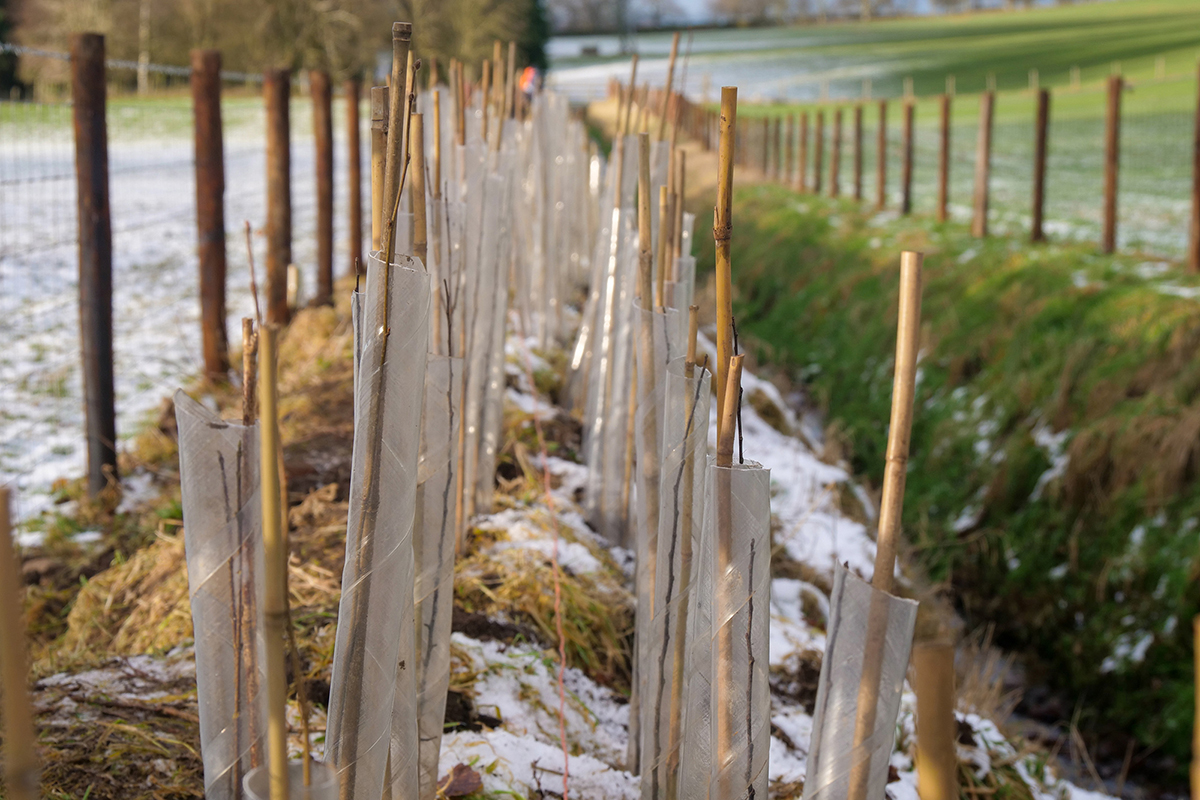
Over the past year, we have led a partnership project that has worked together to reduce pollutants reaching an important drinking water supply at Bowscar. How has this been achieved? By changing land management practices, introducing nature-based solutions and improving drainage.
The distinctive red sandstone found in the Eden valley is not just part of the landscape; over millions of years, it has formed an important aquifer that thousands of people rely on for their drinking water.
As well as providing drinking water – pumped from boreholes from deep underground to treatment works, this groundwater also feeds the base flows of local rivers.
Whilst this porous rock creates the ideal conditions to hold water, it also provides a way for pollutants from the soil’s surface to reach the aquifer.
Increasing levels of nitrate in the borehole at Bowscar, just outside Penrith, set alarm bells ringing with ourselves and United Utilities.
Two possible reasons for this increase were identified. One, historically, the surrounding land was intensively farmed with nutrients from the land leaching through the soil, and two, water from the neighbouring road was flooding into the borehole compound, reaching the borehole head.
A radical rethink on managing the land was needed, requiring a shift in focus from intensive farming to protecting the borehole. This would only be possible with support from a wide range of partners.
Andy Dyer, Senior Farming and Conservation Manager, Eden Rivers Trust explains more:
It’s not so much about a fix now, but in 25-30 years’ time. By reducing the nutrient load now, our water supply will be better protected in the future.
Our goal was to find nature-based solutions and make infrastructure improvements that would improve water quality, whether that’s in the groundwater or the River Petteril, downstream of the site.
Our role was to deliver a jointly funded and supported venture between landlord Robert Harris; the tenants, A & B Taylor Contracting; United Utilities and Cumbria County Council roads department.
Andy adds:
Building on an initial plan devised by ourselves with United Utilities, our aim was to bring together the right partners who would not only make the improvements needed, but also could help us unlock and match additional funding through opportunities such as Countryside Stewardship to further improve water quality in this area.
Cumbria County Council set to work to solve the road drainage by digging roadside ditches to divert water and installing new roadside drains connected by pipe to the field drainage system, taking the water away from the borehole compound.
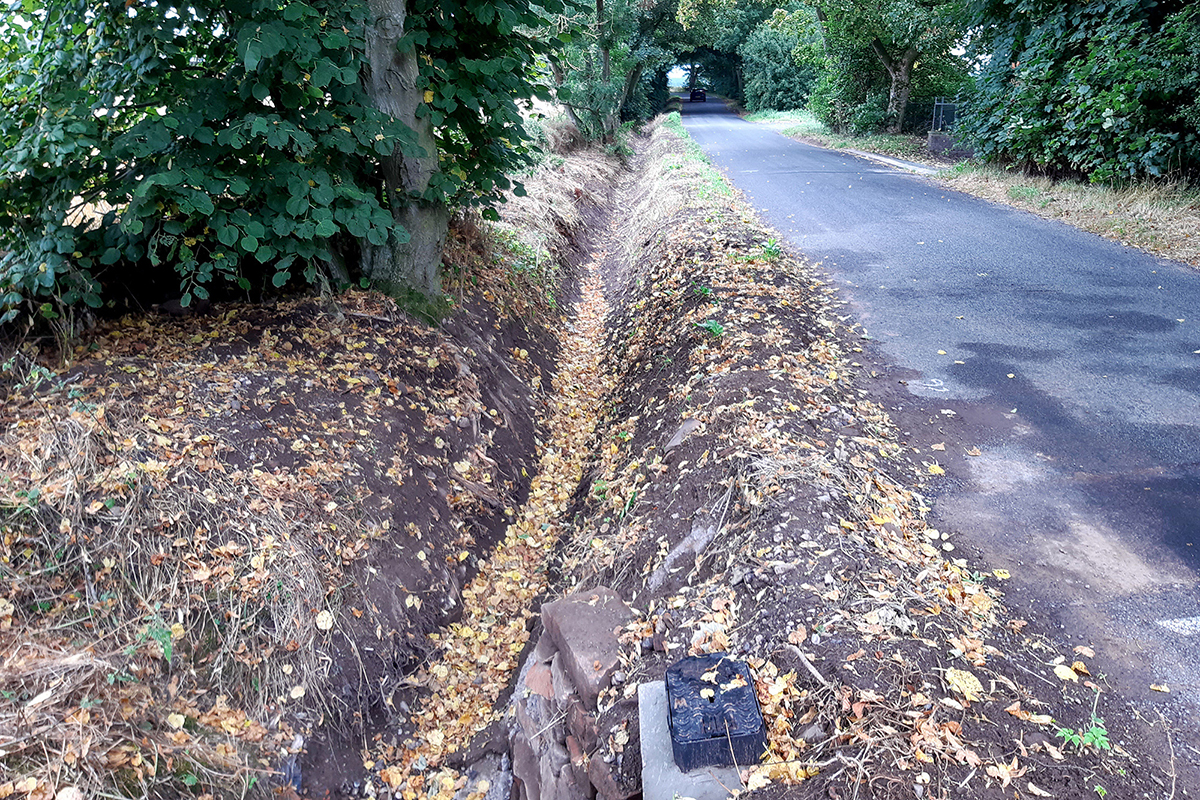
Ditch and improved culvert to divert water from the road away from the compound.
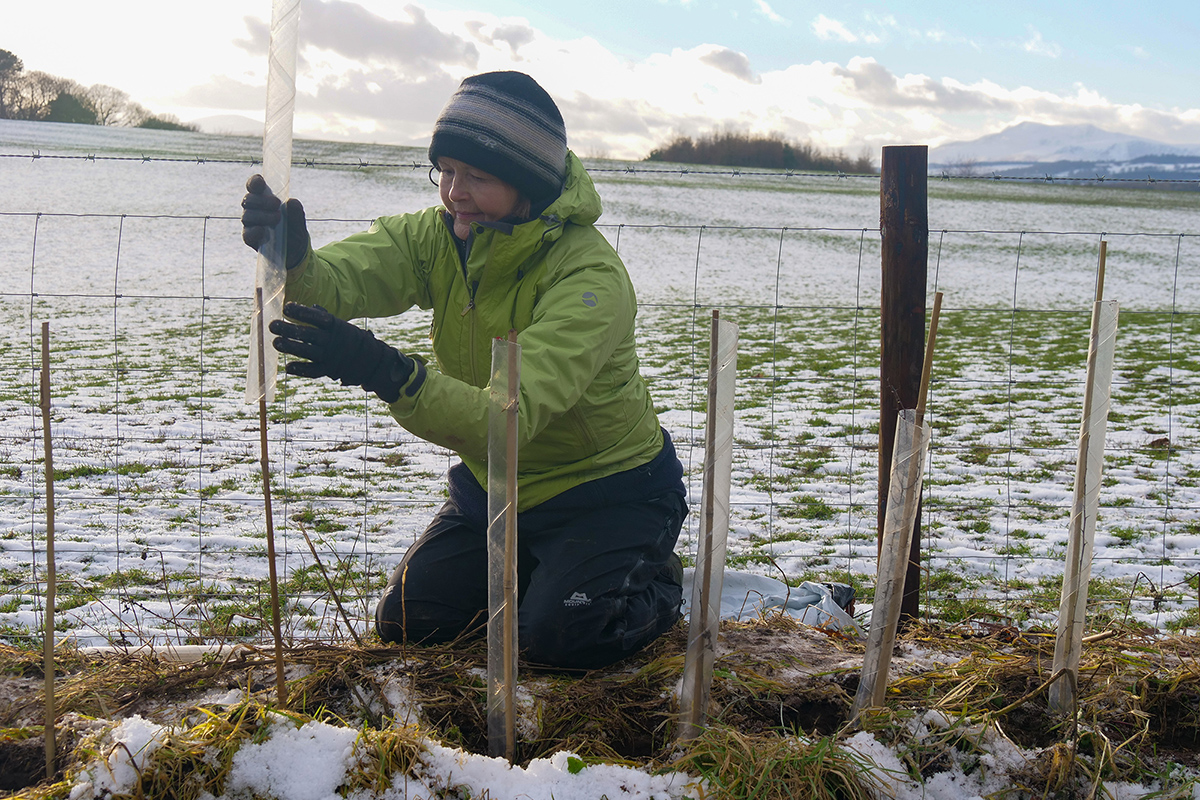
ERT volunteer braving the cold and snow to plant a 200m long hedge along the ditch.
Meanwhile, tenants Ben and Jannike Taylor fenced off the ditch in the field to prevent livestock access to the watercourse and we mobilised our army of volunteers to plant a new hedgerow along its length. This will protect the ditch from point source and diffuse pollution as well as improve biodiversity and wildlife in the area. New water troughs, a gateway and a culvert will ensure livestock can still access grazing fields and drink water.
Ben and Jannike also established 10 hectares of herbal ley, in place of previously grown arable crops. This will reduce the impact on groundwaters as the herbal ley contains nitrogen fixing legumes as well as deep-rooted grasses and herbs that do not require applications of inorganic fertilise and only low inputs of organic manures.
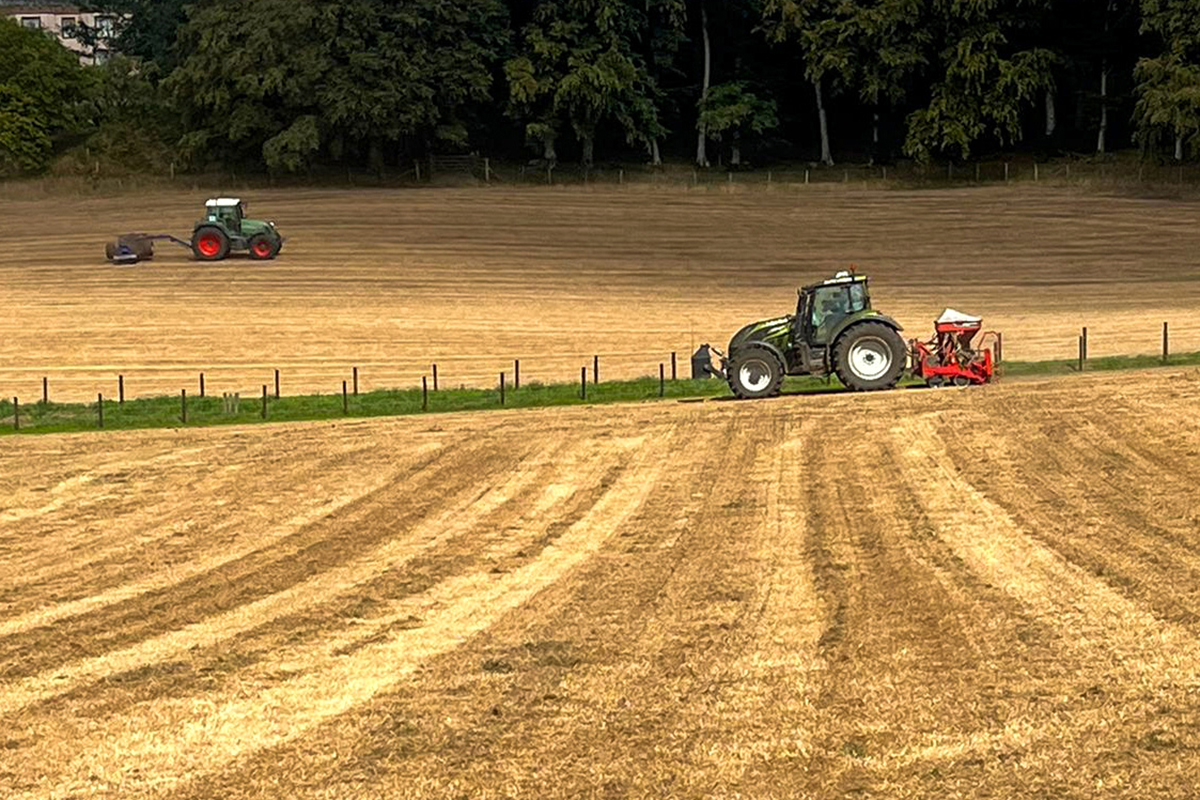
Herbal ley drilling and rolling.
Jannike Taylor adds:
This not only helps the environment and water course but is also integral to our farming enterprise by fattening lambs and producing quality haylage.
Partnering with Eden Rivers Trust and United Utilities has been a successful and enjoyable project that we are proud to have been involved in.
Further work this summer will take place to cover and re-surface sheep pens within 400m of the borehole.
John Gorst, Catchment Partnership Officer, United Utilities summed up the project:
United Utilities was delighted to be able to work with our neighbour Robert Harris of Bowscar Estates and his tenant farmers, Ben and Jannike Taylor, on landscape improvement measures that not only help to protect the raw water at Bowscar borehole but also improve the condition of the farmland. This partnership working has been delivered through our collaboration with Eden Rivers Trust who have skilfully brought together all the partners to deliver this project, to the benefit of all the partners and the environment.
If you are interested in finding out how a mix of nature-based interventions and farm infrastructure improvements can improve water quality and river health, get in touch with Andy Dyer on 01768 866788.
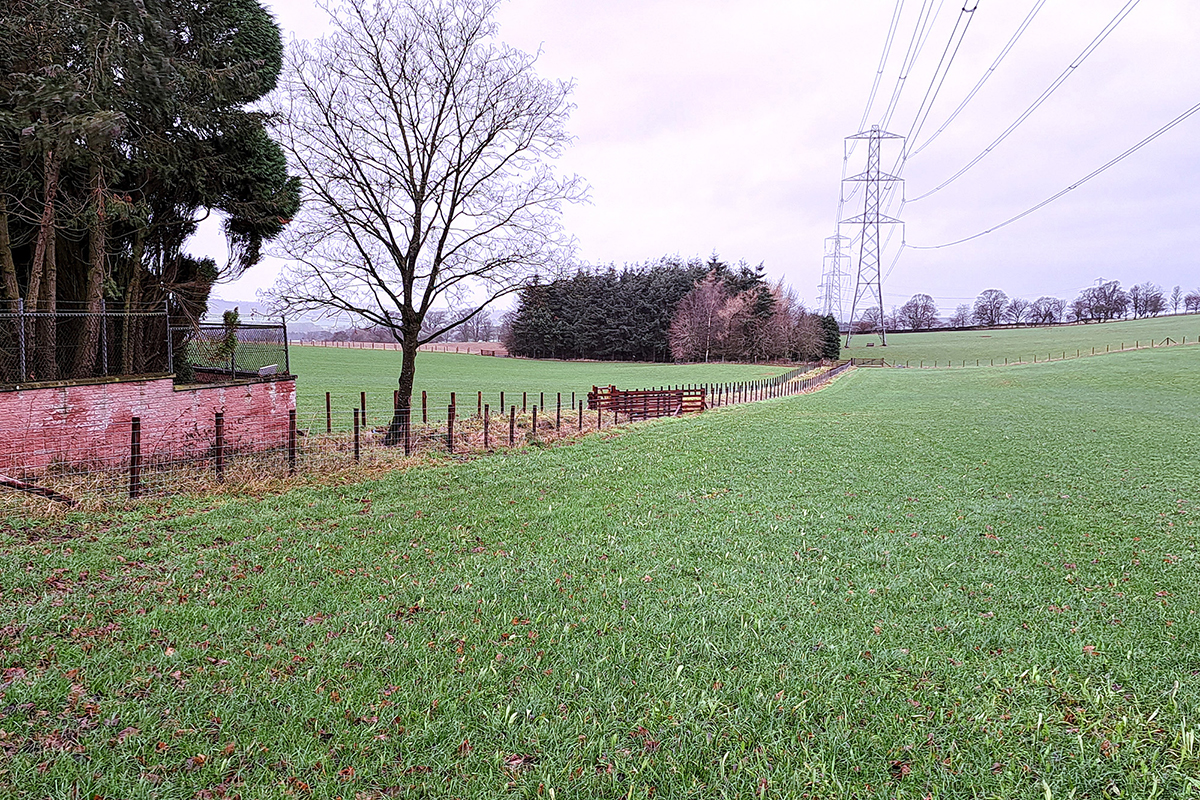
Herbal leys established in the fields on either side of the fenced off ditch

Whips planted in zig-zag formation to ensure correct density for the hedge.
